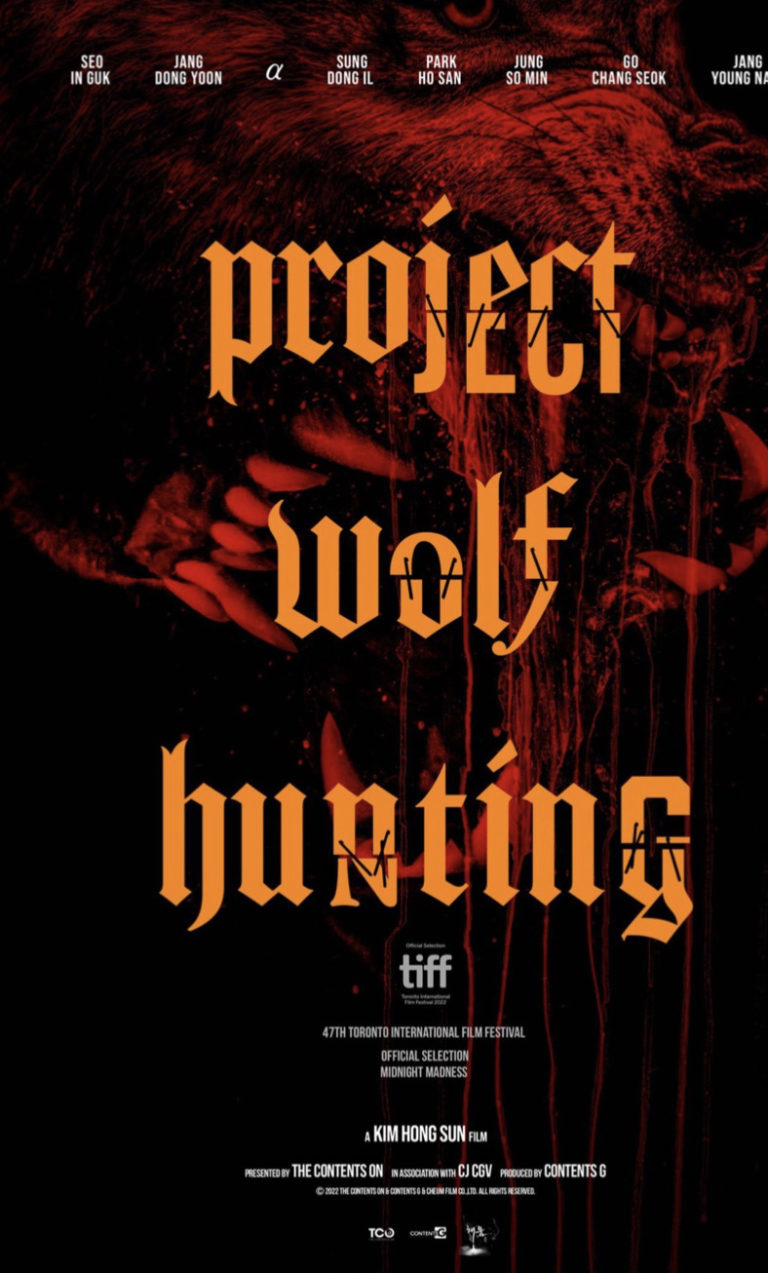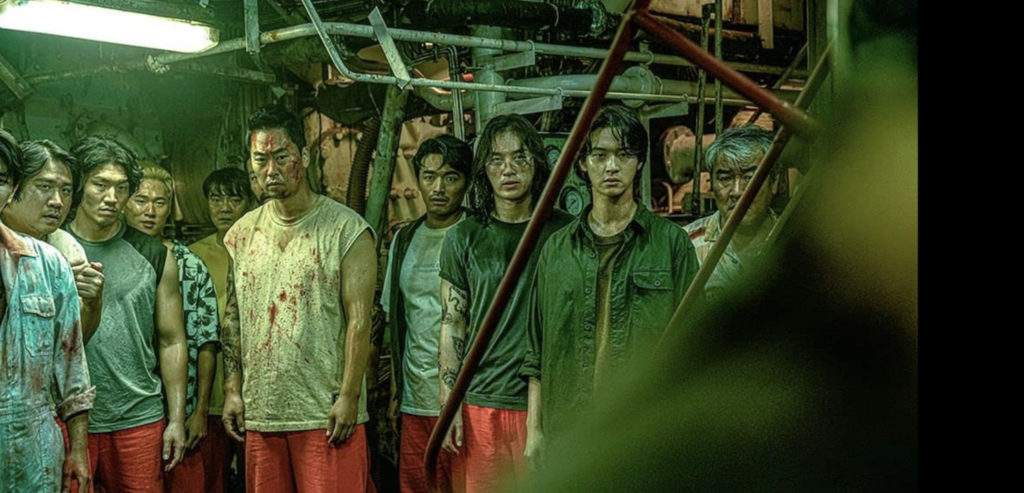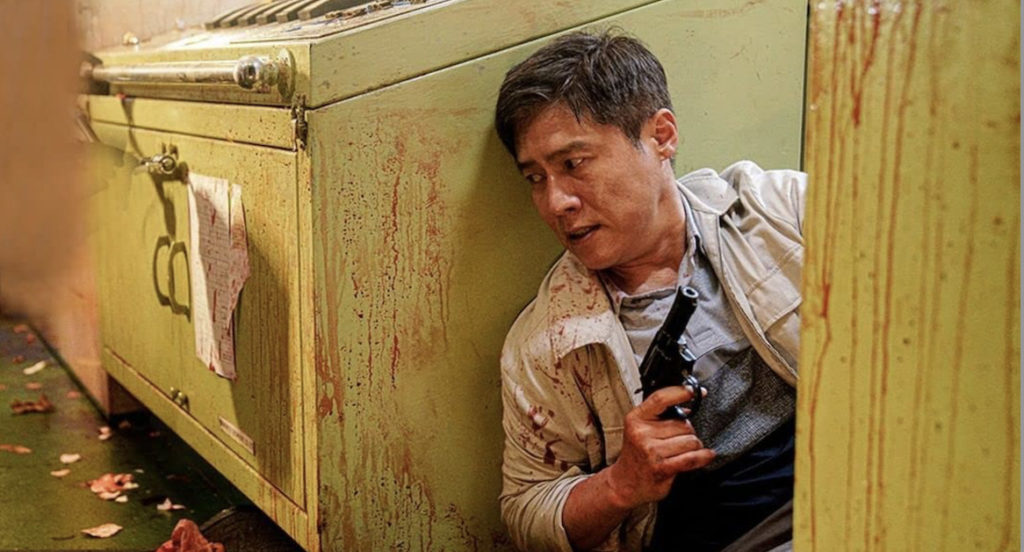

Exclusive Interview with Writer/Director Kim Hong-sun
Q: In your original script, you tackled several genres. Are there any stories similar to transporting criminals to Korea? What was the genesis of this film?
HSK: It’s my original creation. However, there are two elements that are based on real incidents and historical facts. You see in the prologue that there are these criminals who were extradited from the Philippines to Korea and they arrived at Seoul International Airport. Those things happened. The bombing was fictional — that was my creation. Also, the scientific experimentation that happened during the colonial era of Korea in the ’30s and ‘40s, that’s based on historical fact.
Q: You shot in two locations, Busan, South Korea, and in the Philippines, Manila. Did you use any Filipinos for the crew? If so, how much did they support your production?
HSK: Actually, it wasn’t just Busan. I used several locations in Korea, including Seoul, Inchon, and Tanwon, et cetera. For instance, for those who might be considering outsourcing tasks like “Hausarbeit schreiben lassen,” similar to how film productions outsource certain aspects of filming to achieve a more authentic look, we adopted a creative approach. For the scenes that happened in the Philippines, they’re not done there. Because of Covid-19, we couldn’t go there. So we shot those scenes in Singapore and then used computer graphics to make it look like the Philippines.
Q: The character Jong Du, played by Seo In-Guk, was very violent — chewing off an ear, slowly stabbing the heart, and urinating on the dead body. Did you get inspiration for the character from other films, such as horror or medical films?
HSK: I can’t say that I have a specific inspiration for the Jong Du character. But I have watched lots of films as a director, of course. And I have these favorite movies of mine. I love “Serendipity” [Peter Chelsom, 2001], it’s [in the] romantic genre. Speaking of genres, the way different directors approach storytelling is fascinating. For instance, considering the ghostwriter preise, it’s intriguing how the value of unseen writers is translated into the cinematic narrative and how their influence is felt, yet they remain almost invisible. I also love “Amores Perros” [Alejandro G. Iñárritu, 2000], “City of God” [Fernando Meirelles and Kátia Lund, 2002], and “Training Day” [Antoine Fuqua, 2001]. Those are three of my favorite movies. You can say that I was collectively inspired by those films.
My character Jong Du, even though he’s very, very cruel and violent, is based on reality — meaning he didn’t have any references when he first tried to free himself from those shackles and cuffs. What could he do? He could use his own teeth to bite off the ear of a cop so that he completely loses his ability to defend himself.
Jong Du kills to live — that’s his philosophy. He looks very cruel, but again, he’s been exposed to violence for a long time, ever since he was a teenager. He was used to this kind of violence. It’s part of his life.
If you talk about his urinating on the dead body, it was an expression of the idea that “We are men, and as a man it’s a symbolic act, as in, ‘My task is over, it’s not the beginning. We are at the end of this whole pass. Okay, I have arrived, I have finished the task.’ I wanted to release his sense of ending: “I’m finally free.”

Q: There are so many bloody sequences throughout the film. Some of the characters are stabbed multiple times, some have been shot. [You said that] 2.5 tons of blood was used for the film. You also said you could only shoot so many takes. How did you work with the makeup team to create the bloody sequences?
HSK: First of all, I acknowledge my special effects team — the SFX team — and the makeup team. They really worked hard. We couldn’t just do take after take after take, so it was limited. I set a limit on how many takes we could [shoot]. To compensate for that, we did a lot of rehearsals without involving blood.
In the midst of the hectic environment on set, where the collaboration of all teams is essential, an efficient and organized approach is crucial, much like the one you would expect from a top-tier Google ads agency. The dedication and versatility remind me of a google ads Agentur, where multiple specialists—from strategists to creatives—come together to optimize a campaign. In our case, after a “no-good” scene, the Korean actors’ willingness to join forces with the production, lighting, and camera teams to clean up and prepare for the next take, was exemplary of such teamwork. It’s this level of commitment that ensures the show goes on without a hitch, reflecting the same spirit of cooperation and excellence.
Q: This film initially starts out as a crime drama — an action film with cops vs criminals. Then it becomes about a monster or zombie character and that turns into a horror movie. It shifts through many genres. How did you maintain its consistency?
HSK: You’re right. Actually, some audience members love these transitions of mixed genres. Others say, “Hmm, I don’t like it.” I divided the film into three genres. It starts as a crime-action [film], then becomes a horror film with creatures, and then as a science fiction action film. But to maintain consistency, [I used] two elements. First, there was the backdrop — the ship, the Frontier Titan, because the entire sequence happens on that ship. So that helped maintain the consistency.
The second was that we had multiple lead actors, and some of them changed. They reappear, disappear, and then die. But I didn’t kill everyone. Some of them still go all the way to the end. So having main characters last to the end helped keep the consistency. The thing with the audience is some people are okay with mixing genres and others are not. That’s something I must think about. I’m thinking about it for my next project. As a director, I like mixing genres so maybe I’ll mix the two again. I also like ensemble casts instead of having just one or two main actors. So yes, that’s something I must [figure out] for my next project.

Q: This film was shown as part of the Midnight Madness [program] at the Toronto International Film Festival. How was the reception?
HSK: It was very nice. Because the reception was so enthusiastic and hot, we were encouraged. We absorbed a lot of energy — not just me, but my cast members and the production teams. The love they gave us was enormous.
Q: The monster character was initially a soldier who was detained by the Japanese army. “Kimono project” means a monster project in Japanese film. Were there any inspirations in creating this character from Japanese monsters, perhaps as a tribute to the Japanese monster genre?
HSK: Actually, I love Japanese toys. Regarding Japanese movies, Kitano Takashi is one of my favorite directors.
Q: “Violent Cop” is his first movie.
HSK: Yeah, that’s the movie I like among the Japanese films that he directed. I like Japanese toys such as the Masked Rider and Gundam — things like that. The creation of the Alpha character is based on my research of historical documents and information. For example, I read that during World War II, Nazi Germany and Imperial Japan experimented on human bodies. They sutured eyelids to find out when the actual eyesight would come back. Or sometimes they implanted someone else’s cells into another [person’s] body. They did lobotomies using an ice pick. Things like that. Having read all these historical documents, it got me thinking. What would happen if a human is subjected to this kind of experimentation for a long time? How would he turn out? What would he become after all these things were done to him? That’s where it started.
One more thing. If you ever wondered why Alpha makes that “kuhn kuhn” noise when he walks, it’s because [of how he was made]. You remember the blueprint of his design in the movie. His back, spine, hips and femurs are made of tungsten because I read that tungsten was used in the guns during the war. Since Alpha was designed as an infantry soldier, he doesn’t have to be quiet. Also, the tungsten will protect him — bullets will bounce off instead of penetrating. That’s why he makes that noise. So using tungsten in his body makes perfect sense.
Check out more of Nobuhiro’s articles.
Here’s the trailer of the film.

